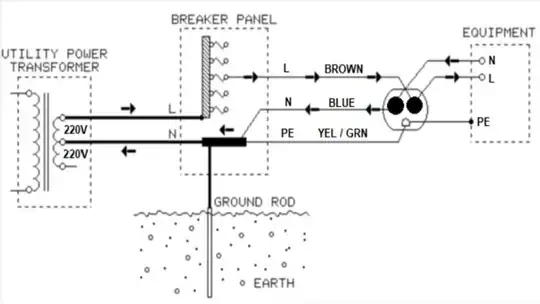I have some misunderstandings with the grounding of a transformer. As far as I know, the utility transformer's (the last transformer before my mains plug) neutral point (star-connected point of 3 phases, this image is probably from the US) connects to the earth with some rods. After that a green-yellow protected earth wire pulls through the mains plug. The reason for this is primarily "safety", is said, because if the live wire accidentally touches the chassis of a household appliance (like a refrigerator), this low impedance connection allows passing ground fault current through its own and RCD device triggered.
I understand the PE cable that is through the main plug to the transformer is critical from a safety perspective. But, why are we earthing the neutral point of the transformer? Maybe for lightning protection? I question this because if this earth connection did not exist, we would not be shocked when the live cable touches any chassis (someone argues we are shocked in any case because of capacitive coupling between earth and other phases, please tell me if that is right).
The fundamental rule of circuit theory is "current must return the source", hence the discourses like "the earth is a global charge pool and can sink/supply all current and supply global 0 V reference" must be wrong (the potential difference that causes lightning is already between the earth and the clouds).
To sum up: why are we earthing the neutral point of the transformer? Please, let me know if there's anything I missed or don't know.
